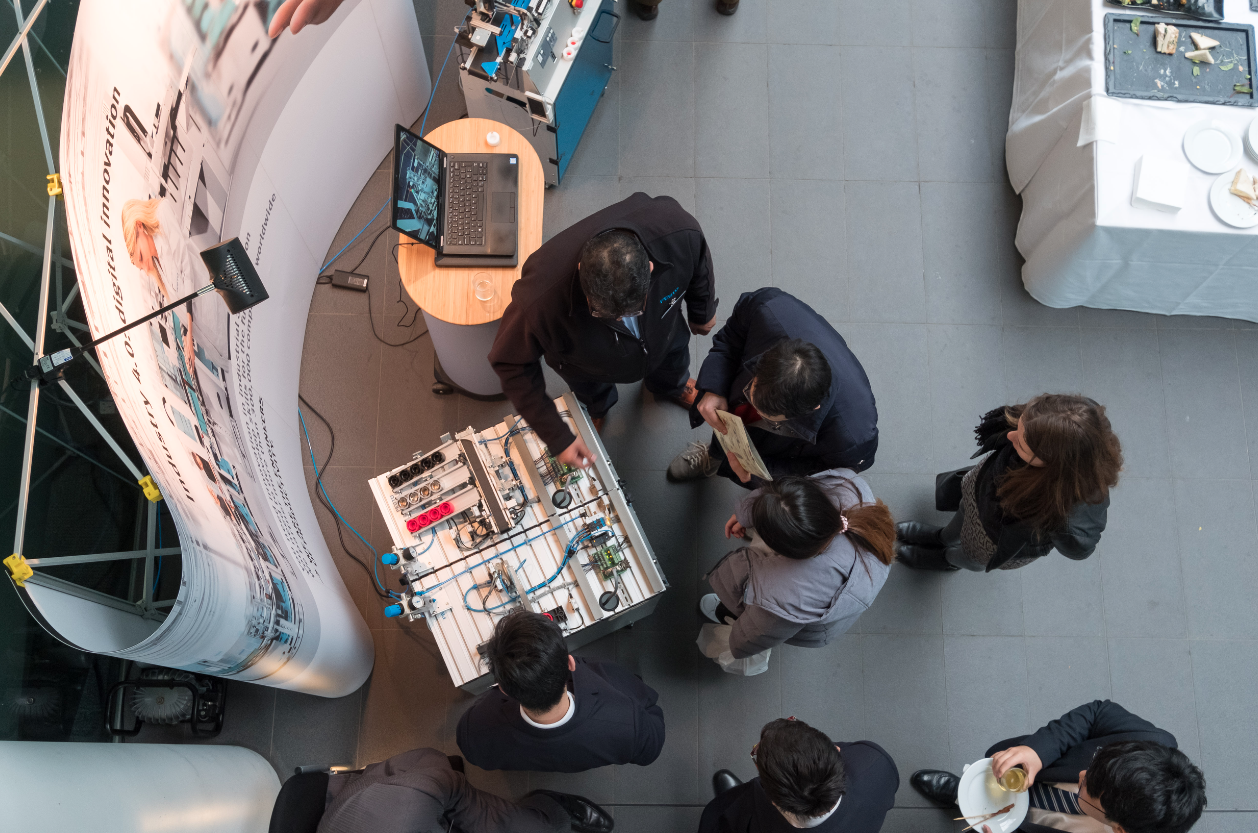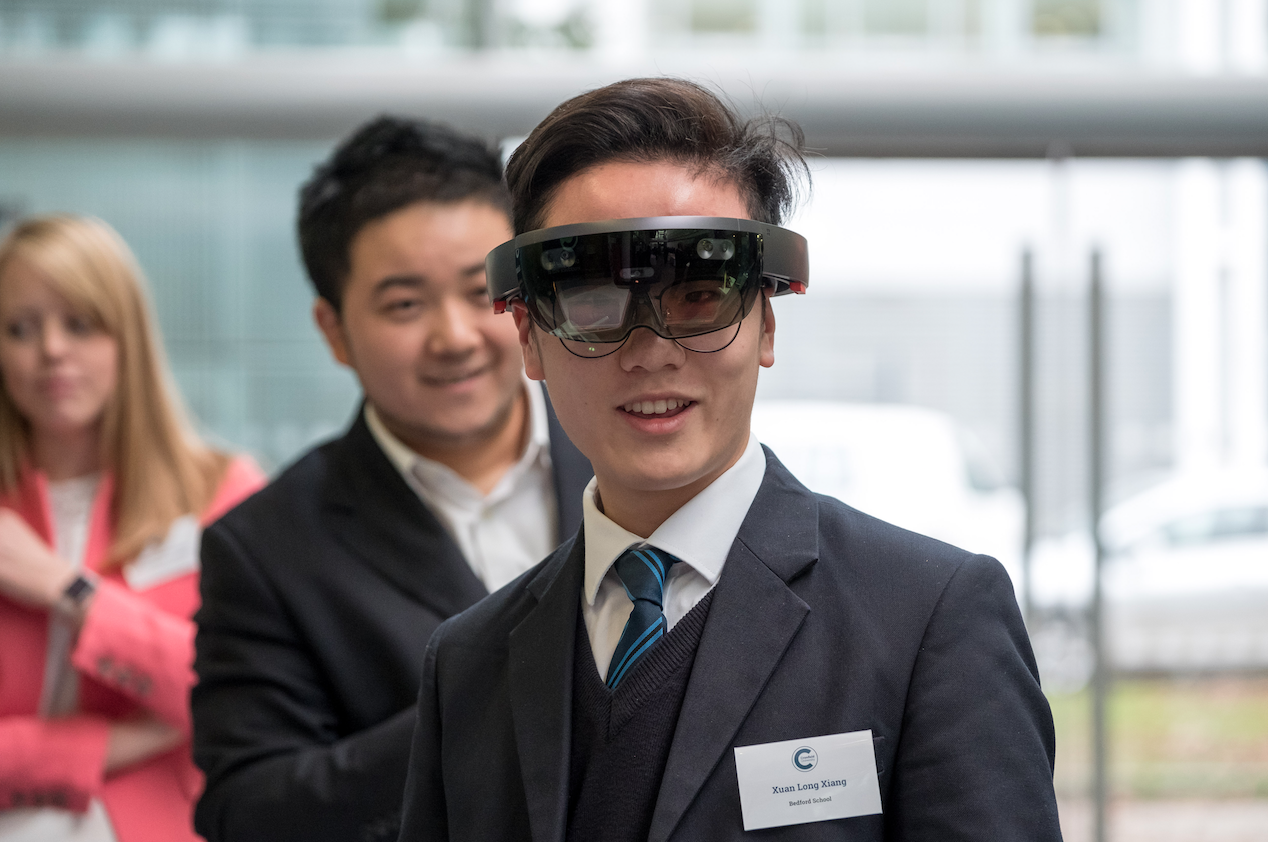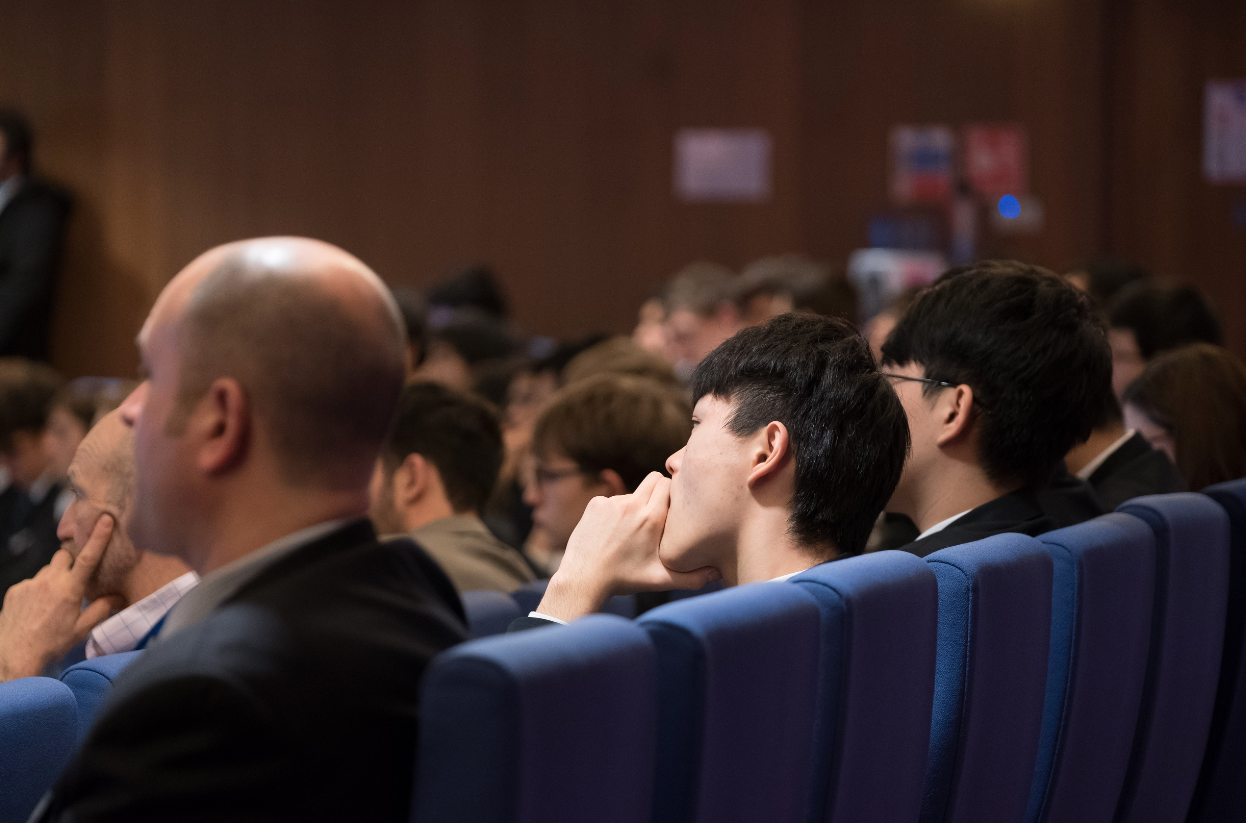Looking towards ‘Manufacturing 2075’ with Professor Mark Girolami: Part I
05/11/2018

Manufacturing engineering has always been data-centric, based on statistics captured from different forms of measurement. But the available data has been slow to arrive, limited, pedestrian.
A confluence of new technologies has led to an explosion in the capabilities of measurement and the possible data from machines, structures, processes and systems. So what was slow and static is now ‘alive’: a super-level of granularity, both in temporal and spatial data. Data-centric engineering means the information is always there to improve efficiency, performance and safety of any structure, item of machinery, or process that joins them all together.
What this means for manufacturing sector will be a key focus for Manufacturing 2075 (5 December 2018, Cranfield University).

School children enjoying the interactive learning at Manufacturing 2075: 2017
In business terms, there is the increasing importance to manufacturers of finding ways to monetise their data, to move from just providing products to a combination of products and services. A company should no longer be just a manufacturer of for example valves but an enterprise able to sell intelligence on the flow and nature of what passes through those valves.
A basis of data will allow for new technologies and materials to be introduced more effectively and safely. Like 3D printing. For all its potential there have been mostly only tentative and small-scale applications so far. In recent months, the Alan Turing Institute has been working with data from the world’s largest 3D printed structure, a 12 metre long stainless steel bridge due to be installed across one of Amsterdam’s oldest canals in 2019. The world’s largest 3D printed metal structure: a 12 metre-long stainless steel bridge. Sensors on the test bridge have provided data on how the structure has responded to a flow of people. In turn we’ve been able to create a ‘digital twin’ of the bridge and a real-time picture of how the physical bridge is performing.
With this level of analysis and quality assurance, the additive manufacture of more large-scale structures can become viable and commonplace. Civil engineering, in particular, has the potential to be transformed, allowing for more of our critical infrastructure to be manufactured cheaply and in easier to install forms. More can be provided in kit form, including entire buildings.

Register for Manufacturing 2075; 5 December 2018 at Cranfield University
The challenge will continue to be what the sector actually does in practice with all this new data. There will need to be more organisational and cultural change among manufacturers. Data-centric analytical tools, skills and practices will need to become part of every engineer’s toolbox – not just an area for the data specialists. And that will include cybersecurity (a major topic at this year’s Manufacturing 2075). More data exchange opens up more channels that can, in theory, be accessed by those with malicious intent. In this context there is going to be a real need for engineers who understand the situation holistically: the combination of clear-sighted decision-making based on an understanding of entire operations and supply chains, an ability to balance risks against benefits, to keep the business moving forward and not shrinking into itself or exposing the organisation to unnecessary threats.
Written by Professor Mark Girolami; Royal Academy of Engineering Research Chair and Chair of Statistics at the Department of Mathematics at Imperial College London, he is also Programme Director for the Alan Turing Institute-Lloyd’s Register Foundation Programme in Data-Centric Engineering.
Professor Mark Girolami will be presenting at this year’s Manufacturing 2075 conference on the 5th of December 2018.
>> Register here for this year’s Manufacturing 2075 conference <<
Categories & Tags:
Leave a comment on this post:
You might also like…
Keren Tuv: My Cranfield experience studying Renewable Energy
Hello, my name is Keren, I am from London, UK, and I am studying Renewable Energy MSc. My journey to discovering Cranfield University began when I first decided to return to academia to pursue ...
3D Metal Manufacturing in space: A look into the future
David Rico Sierra, Research Fellow in Additive Manufacturing, was recently involved in an exciting project to manufacture parts using 3D printers in space. Here he reflects on his time working with Airbus in Toulouse… ...
A Legacy of Courage: From India to Britain, Three Generations Find Their Home
My story begins with my grandfather, who plucked up the courage to travel aboard at the age of 22 and start a new life in the UK. I don’t think he would have thought that ...
Cranfield to JLR: mastering mechatronics for a dream career
My name is Jerin Tom, and in 2023 I graduated from Cranfield with an MSc in Automotive Mechatronics. Originally from India, I've always been fascinated by the world of automobiles. Why Cranfield and the ...
Bringing the vision of advanced air mobility closer to reality
Experts at Cranfield University led by Professor Antonios Tsourdos, Head of the Autonomous and Cyber-Physical Systems Centre, are part of the Air Mobility Ecosystem Consortium (AMEC), which aims to demonstrate the commercial and operational ...
Using grey literature in your research: A short guide
As you research and write your thesis, you might come across, or be looking for, ‘grey literature’. This is quite simply material that is either unpublished, or published but not in a commercial form. Types ...






